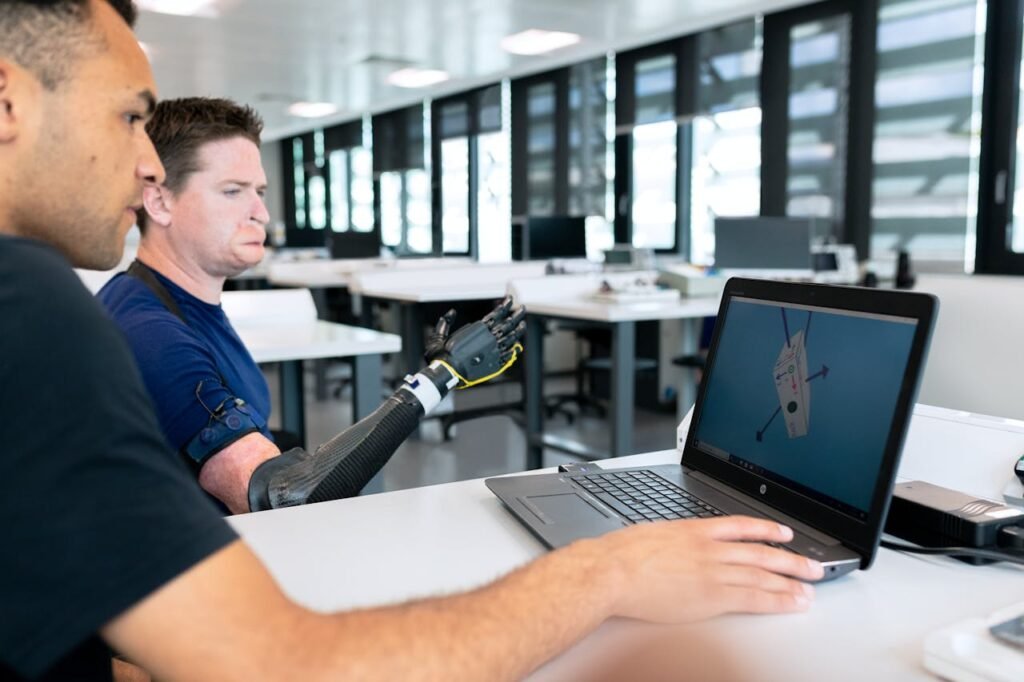The journey of adapting to life after an amputation is both deeply personal and transformative. For many, selecting a prosthetic limb represents a significant step toward regaining independence, mobility, and confidence. However, with so many options and factors to consider, the process can feel overwhelming.
Choosing the right prosthetic limb is not just about functionality—it’s about finding a device that aligns with your lifestyle, goals, and personal preferences. It’s a decision that requires careful thought, professional guidance, and a clear understanding of your unique needs.
This step-by-step guide is designed to simplify the process, providing actionable insights to help you make an informed choice. Whether you’re new to prosthetics or seeking an upgrade, this article will empower you to navigate this important decision with confidence.
Step 1: Understanding Your Needs and Goals
The foundation of selecting the right prosthetic limb is understanding your own needs, goals, and lifestyle. Every individual’s journey is different, and the ideal prosthetic should complement your specific circumstances.
Assessing Daily Activities
Start by reflecting on your typical day-to-day activities. Understanding how you plan to use your prosthetic limb will help you prioritize features that align with your routine.
For example, if you’re a highly active individual, you might prioritize lightweight materials and advanced functionality, such as adaptive joints or shock absorption. On the other hand, if your activities are more sedentary, comfort and stability might take precedence.
Setting Long-Term Goals
Beyond daily activities, consider your long-term aspirations. Do you hope to return to a specific hobby, profession, or sport? Are you looking for a prosthetic that allows you to explore new opportunities or challenges?
For instance, if you’re interested in participating in sports, you may need a prosthetic limb designed for high performance and durability. If you’re pursuing creative endeavors, such as playing an instrument or painting, precision and fine motor control might be key priorities.
By clarifying your goals, you can ensure that your prosthetic supports not only your current needs but also your future ambitions.
Step 2: Consulting with Professionals
Choosing a prosthetic limb is not a decision to make alone. The guidance of experienced professionals—such as prosthetists, physical therapists, and healthcare providers—is essential for navigating the process effectively.
Working with a Prosthetist
A prosthetist is your primary partner in selecting, fitting, and adapting a prosthetic limb. They will assess your residual limb, discuss your goals, and recommend options tailored to your needs.
During the initial consultation, the prosthetist will evaluate factors such as the shape and size of your residual limb, your range of motion, and your skin’s sensitivity. These insights will inform their recommendations, ensuring that the prosthetic limb you choose is compatible with your body and lifestyle.
Additionally, your prosthetist will guide you through the fitting process, making adjustments as needed to optimize comfort and functionality. Regular follow-ups allow for ongoing refinements, ensuring that your prosthetic continues to meet your needs over time.
Leveraging Physical Therapy
Physical therapy is a crucial component of the prosthetic journey, helping you build strength, coordination, and confidence in using your new limb. Your therapist will design a personalized rehabilitation plan that includes exercises to improve mobility, balance, and endurance.
For example, early therapy sessions might focus on learning to walk with a prosthetic leg or developing basic grip strength with a prosthetic arm. As you progress, the therapist will introduce more complex tasks that mimic real-world challenges, such as navigating stairs or handling small objects.
The collaboration between your prosthetist and physical therapist ensures a holistic approach to rehabilitation, addressing both physical and emotional aspects of recovery.
Step 3: Exploring Types of Prosthetic Limbs
Understanding the different types of prosthetic limbs is essential for making an informed decision. Each type is designed to address specific needs, and the right choice depends on factors such as your activity level, goals, and budget.
Mechanical Prosthetics
Mechanical prosthetics are durable, cost-effective, and rely on the user’s body movements for operation. These devices are often chosen for their simplicity and reliability, making them ideal for users seeking basic functionality.
For example, a mechanical arm prosthetic might feature a hook or split-hand design that allows users to grip objects securely. Similarly, a mechanical leg prosthetic may include a simple hinge joint for walking on flat surfaces.
While mechanical prosthetics lack advanced features, their straightforward design makes them easy to maintain and suitable for individuals with limited access to specialized services.
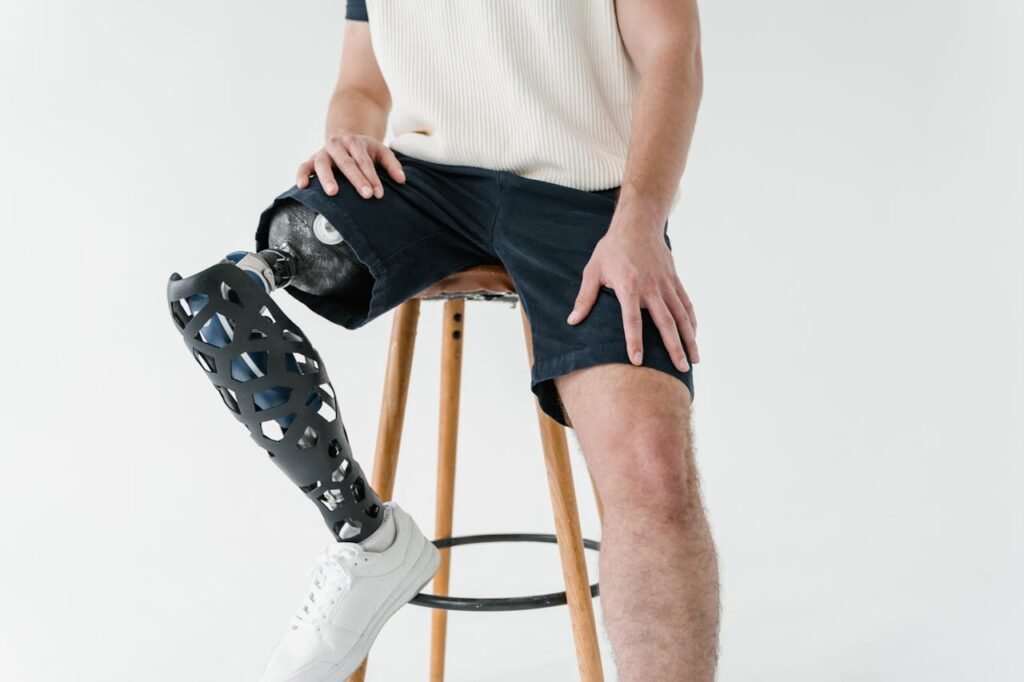
Myoelectric Prosthetics
Myoelectric prosthetics use electrical signals from your muscles to control movements. Sensors placed on your residual limb detect these signals, translating them into actions such as opening and closing a hand or bending a knee.
These prosthetics offer greater precision and versatility, enabling users to perform tasks that require fine motor skills or multiple grip patterns. For example, a myoelectric hand prosthetic can help users hold delicate objects, type on a keyboard, or use tools with ease.
While myoelectric prosthetics are typically more expensive than mechanical options, their advanced functionality and natural feel make them a popular choice for users seeking independence and control.
Activity-Specific Prosthetics
For individuals with specialized needs, such as athletes, musicians, or manual laborers, activity-specific prosthetics provide tailored solutions. These devices are designed to support specific tasks, offering features that enhance performance and durability.
For instance, a runner might choose a prosthetic leg with a carbon-fiber blade for speed and shock absorption, while a guitarist might opt for a prosthetic arm with customized finger attachments for strumming and chord changes.
Activity-specific prosthetics often complement a primary device, allowing users to switch between options depending on their needs.
Step 4: Prioritizing Fit and Comfort
The fit and comfort of your prosthetic limb are critical for ensuring long-term usability and satisfaction. A well-fitted prosthetic feels like an extension of your body, providing stability and reducing fatigue during daily activities.
The Role of the Socket
The socket is the part of the prosthetic that connects to your residual limb. Its design and fit play a major role in your overall comfort. A poorly fitted socket can lead to pressure points, irritation, and even long-term complications such as skin breakdown.
Custom sockets are crafted to match the unique shape and size of your residual limb, ensuring a snug yet comfortable fit. During the fitting process, your prosthetist will use techniques such as 3D scanning or casting to create a precise mold.
It’s important to communicate openly with your prosthetist about any discomfort or issues with the socket. Regular adjustments and maintenance ensure that the socket continues to provide optimal support as your needs evolve.
Suspension Systems
The suspension system of your prosthetic limb determines how securely it attaches to your body. Various options are available, including suction, pin-lock, and strap systems.
For example, suction suspension systems create a vacuum seal for a snug and secure fit, while pin-lock systems use a mechanical locking mechanism for added stability. Strap systems offer adjustability, making them suitable for individuals with fluctuating limb sizes.
Choosing the right suspension system depends on your activity level, preferences, and the shape of your residual limb. Your prosthetist can guide you in selecting the option that best meets your needs.
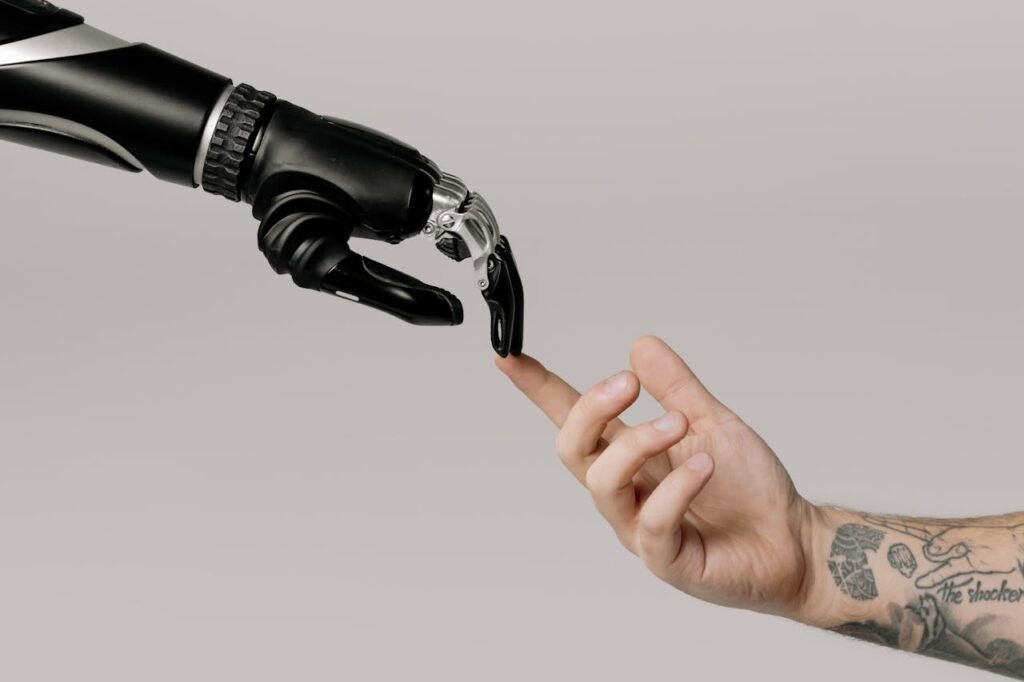
Step 5: Considering Advanced Features and Technology
Prosthetic technology has advanced significantly in recent years, offering features that enhance functionality, ease of use, and user experience. While not all users require cutting-edge technology, understanding what’s available helps ensure you choose a device that meets your specific needs.
Adaptive Technology
Adaptive technology allows prosthetic limbs to respond dynamically to your movements and environment. For instance, microprocessor-controlled knees in lower-limb prosthetics adjust resistance and flexibility in real-time, providing smoother transitions while walking, running, or climbing stairs.
Similarly, adaptive hand prosthetics can switch between different grip patterns based on the task, such as holding a pen, gripping a glass, or shaking hands. These features are particularly useful for individuals with active lifestyles or those who frequently perform varied tasks.
Discussing your daily activities with your prosthetist ensures you select adaptive technologies that align with your needs and maximize your mobility.
Sensory Feedback Systems
One of the most exciting advancements in prosthetics is sensory feedback technology, which bridges the gap between artificial and natural sensation. By incorporating tactile sensors, these systems allow users to “feel” textures, pressure, or temperature, enhancing precision and control.
For example, a prosthetic hand equipped with sensory feedback might provide vibrations or signals to indicate the force applied during a grip. This feature is invaluable for tasks that require delicate handling, such as picking up fragile objects or fastening buttons.
While sensory feedback systems are still evolving, they represent a significant step toward creating prosthetics that feel like a natural extension of the body.
Smart Prosthetics and Connectivity
Smart prosthetics leverage technologies such as Bluetooth, AI, and mobile apps to enhance usability and customization. These devices can sync with smartphones or tablets, allowing users to monitor performance, adjust settings, and receive updates.
For example, a user might use an app to calibrate their prosthetic’s grip strength or track their progress in rehabilitation. AI integration further enhances functionality by analyzing usage patterns and predicting movements, creating a more intuitive experience.
Smart prosthetics offer unparalleled flexibility and convenience, making them an attractive option for tech-savvy users.
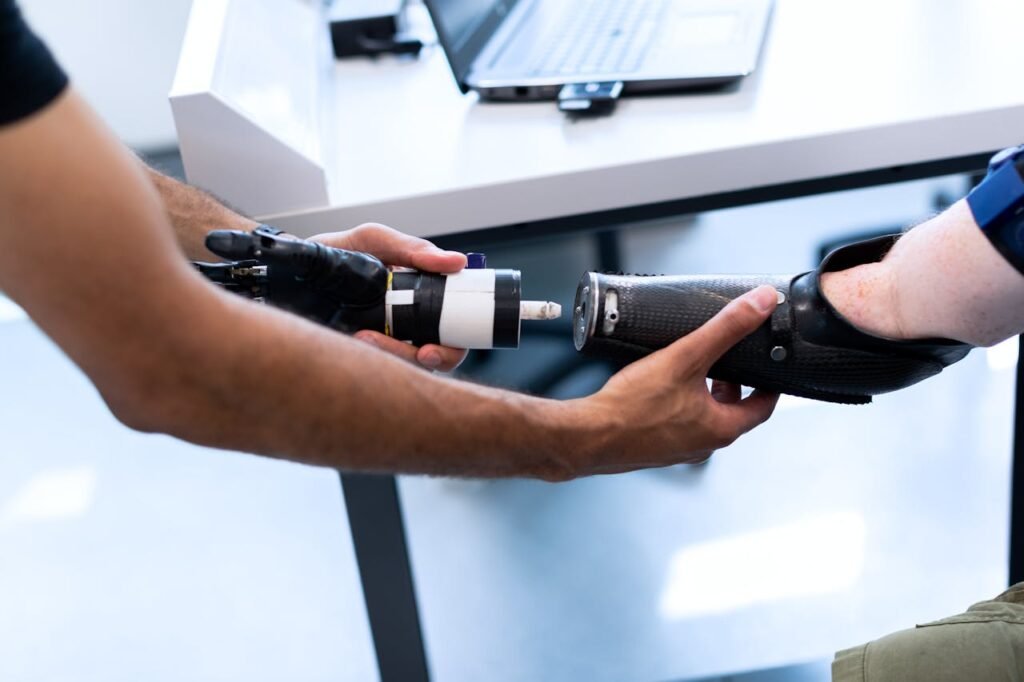
Step 6: Exploring Customization and Personalization
While functionality and comfort are crucial, the appearance and personalization of your prosthetic limb can also play a significant role in your confidence and satisfaction. Many manufacturers now offer customization options that allow you to design a prosthetic that reflects your personality and style.
Aesthetic Customization
Prosthetic limbs are no longer limited to neutral or medical-looking designs. Many users opt for aesthetic covers that mimic the appearance of natural skin, complete with realistic textures, veins, and freckles. These covers can be color-matched to your skin tone, creating a seamless look.
Alternatively, some users embrace bold, artistic designs that transform their prosthetic into a statement piece. Options like vibrant colors, metallic finishes, or patterns inspired by art or nature allow you to celebrate your individuality.
Functional Customization
Customization isn’t just about aesthetics—it’s also about tailoring the prosthetic to your specific activities and goals. For example, modular designs allow you to swap components or add specialized tools, such as a terminal device for sports, cooking, or crafting.
Collaborating with your prosthetist ensures that your prosthetic is equipped with the features and functionality you need to succeed in your chosen pursuits.
Step 7: Embracing the Adaptation Process
Choosing a prosthetic limb is only the beginning of your journey. The adaptation process involves learning to use your prosthetic effectively, building strength and confidence, and integrating it into your daily life.
Physical and Emotional Adaptation
Physical adaptation involves developing the skills and coordination needed to operate your prosthetic limb. Regular practice and rehabilitation exercises help you build muscle memory and improve control, whether it’s walking with a prosthetic leg or mastering fine motor tasks with a prosthetic hand.
Emotional adaptation is equally important. It’s natural to experience a mix of emotions, from excitement and hope to frustration and doubt. Support from family, friends, and professionals can make a significant difference in navigating these feelings.
Joining peer support groups or connecting with others who have undergone similar experiences provides encouragement and practical advice, fostering a sense of community and belonging.
Seeking Ongoing Support
Your relationship with your prosthetic limb—and your prosthetist—will evolve over time. Regular check-ups allow for adjustments, maintenance, and upgrades that keep your prosthetic functioning optimally.
For example, as your residual limb changes shape or size, your prosthetist can modify the socket for a better fit. Similarly, as new technologies emerge, you may choose to enhance your prosthetic with advanced features or accessories.
Businesses that offer robust aftercare services, including maintenance plans and user education, ensure that you feel supported throughout your journey.
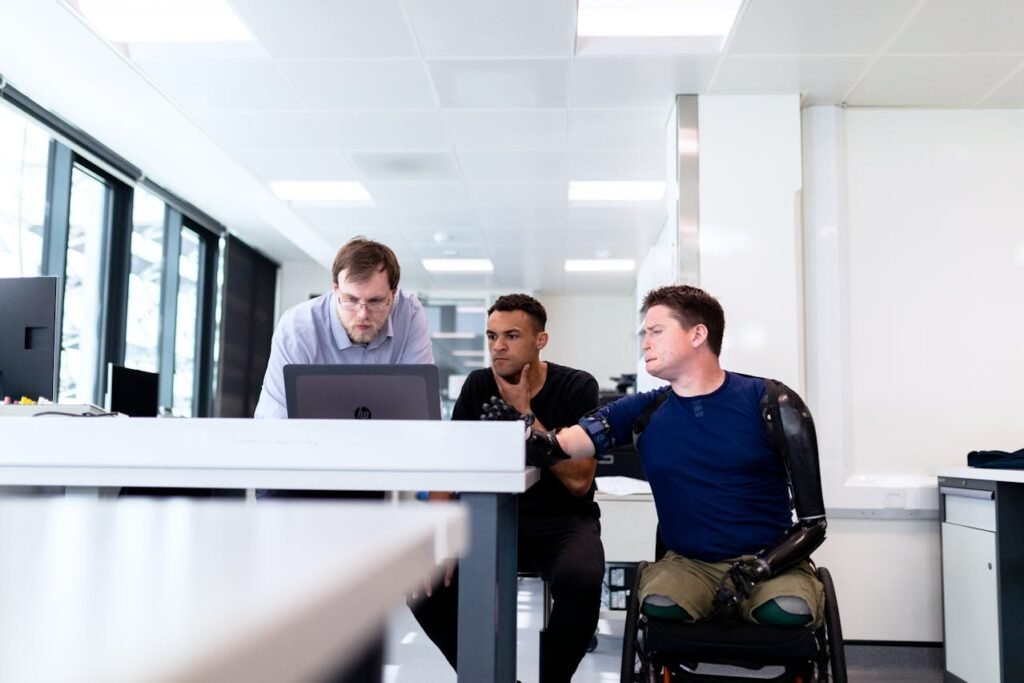
Step 8: Financial Planning and Accessibility
The cost of a prosthetic limb can vary widely depending on the type, materials, and technology involved. Financial planning is a critical step in ensuring that you select a prosthetic that meets your needs while staying within your budget.
Understanding Cost Factors
Several factors influence the cost of a prosthetic limb, including its complexity, materials, and level of customization. For example, a basic mechanical prosthetic may be more affordable than an advanced myoelectric device with adaptive features.
Similarly, activity-specific prosthetics designed for sports or other specialized tasks may come with a higher price tag.
It’s essential to discuss these cost considerations with your prosthetist, who can help you evaluate different options and prioritize features based on your budget and goals.
Insurance Coverage and Financial Assistance
Many individuals rely on insurance or government assistance programs to help cover the cost of a prosthetic limb. Reviewing your insurance policy in detail is crucial for understanding what is covered, including fittings, repairs, and replacement parts.
If insurance coverage is limited or unavailable, financial assistance programs offered by non-profits, charitable organizations, or prosthetic manufacturers can provide additional support. Some providers also offer payment plans or financing options to make prosthetics more accessible.
Prosthetic manufacturers and clinics that actively assist users in navigating financial resources demonstrate their commitment to accessibility and user support.
Step 9: Trial Periods and Real-World Testing
A trial period is an invaluable part of the prosthetic selection process, allowing you to test different devices in real-world scenarios before committing to a final choice. This hands-on experience helps you assess factors such as comfort, functionality, and compatibility with your daily activities.
Assessing Comfort and Fit
During the trial period, pay close attention to how the prosthetic feels during extended use.
Any issues that arise during the trial should be discussed with your prosthetist, who can make adjustments or recommend alternative options. This iterative process ensures that your final prosthetic provides the best possible fit and comfort.
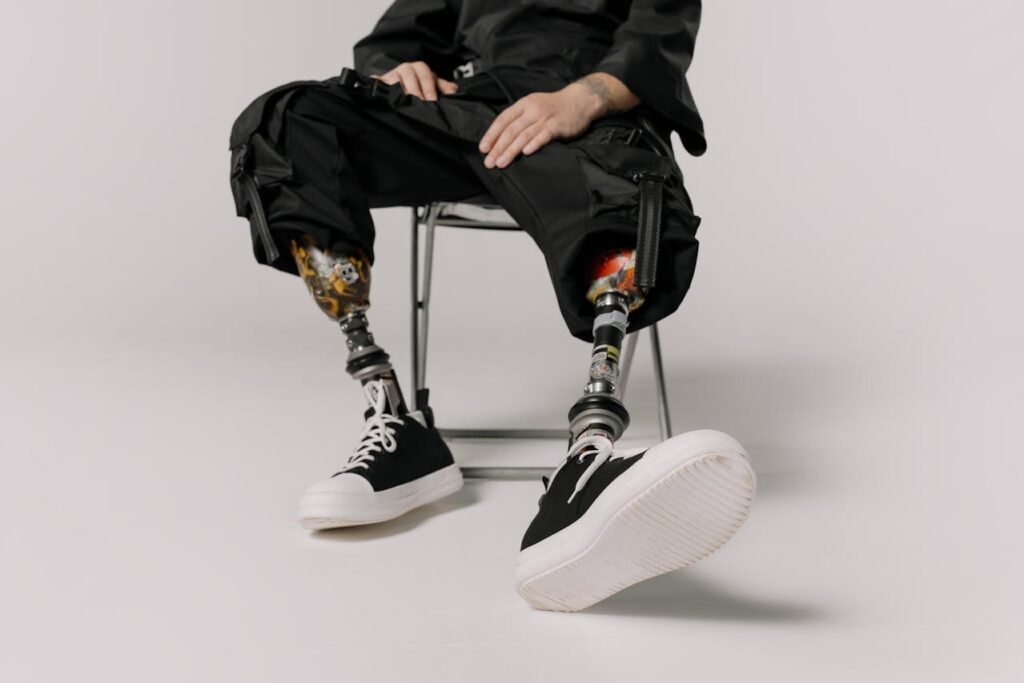
Testing Functionality
Use the trial period to test the prosthetic’s functionality in various settings. For example, practice walking on uneven terrain, holding objects of different weights, or performing tasks that require fine motor skills.
Real-world testing helps you identify strengths and limitations, giving you the confidence to make an informed decision. It also provides valuable feedback to your prosthetist, enabling further refinements to the device.
Step 10: Embracing Life with a Prosthetic Limb
Once you’ve selected the right prosthetic limb, the next phase of your journey is integrating it into your daily life. This process involves building new routines, exploring possibilities, and celebrating milestones along the way.
Building Confidence
Confidence is key to adapting successfully to a prosthetic limb. Start with simple tasks and gradually progress to more complex activities as your skills and comfort level improve. Celebrate each achievement, no matter how small, as a step forward in your journey.
Working with a physical therapist or joining peer support groups can provide additional encouragement and guidance. Sharing experiences with others who have faced similar challenges fosters a sense of community and reinforces your belief in your capabilities.
Exploring New Opportunities
A prosthetic limb is not just a tool for regaining what you’ve lost—it’s an opportunity to discover new strengths and possibilities. Whether it’s returning to a favorite hobby, pursuing a new career, or trying an activity you’ve never attempted before, your prosthetic is a gateway to independence and fulfillment.
As you explore these opportunities, don’t hesitate to revisit your prosthetist for adjustments or upgrades that enhance your experience. The partnership you’ve built with your prosthetist is an ongoing resource for achieving your goals.
Step 11: Preparing for Future Advances in Prosthetics
The world of prosthetic technology is continually evolving, with new advancements offering exciting possibilities for enhanced mobility, functionality, and user experience. Preparing for future innovations ensures that your prosthetic journey remains dynamic and adaptable to emerging technologies.
Staying Informed About Innovations
Prosthetic users and professionals alike benefit from staying updated on advancements in materials, design, and features. For instance, the development of lightweight composites and advanced robotics is making prosthetics more efficient and versatile.
Follow industry news, attend workshops or conferences, and engage with online forums to learn about the latest trends. Many prosthetic manufacturers also host events or provide newsletters that highlight new products and research, keeping users informed about upcoming opportunities.
Being proactive about these developments helps you identify potential upgrades that align with your evolving needs and lifestyle.

Embracing Modular and Upgradable Designs
Modern prosthetics increasingly feature modular designs that allow users to customize and upgrade their devices as technology advances. For example, you might start with a basic prosthetic arm and later add components such as adaptive grips, AI-driven controls, or sensory feedback systems.
This modular approach ensures that your prosthetic grows with you, accommodating changes in your goals, activities, or preferences. Discussing future upgrade options with your prosthetist during the initial selection process can help you choose a device that supports long-term adaptability.
Exploring Emerging Technologies
Cutting-edge technologies, such as brain-computer interfaces (BCIs) and 3D-printed prosthetics, are paving the way for a new era in prosthetic design. BCIs, for example, enable direct control of prosthetic limbs through neural signals, offering a level of precision and intuition previously unimaginable.
Similarly, 3D printing allows for rapid, cost-effective production of highly customized prosthetics, reducing wait times and making advanced devices more accessible.
Businesses and users alike should pay attention to these advancements, as they represent the future of prosthetic innovation.
Advocating for Accessibility
As technology advances, it’s essential to ensure that these innovations remain accessible to all users, regardless of geographic or financial constraints. Advocacy efforts by users, healthcare providers, and businesses can drive policies that promote affordability and equitable distribution.
For instance, businesses might collaborate with non-profits to distribute advanced prosthetics in underserved regions or develop affordable versions of high-tech devices. Supporting initiatives that prioritize accessibility ensures that the benefits of emerging technologies are shared widely, empowering users around the world.
Preparing for Your Evolving Needs
Your needs and goals will likely change over time, and preparing for this evolution is an essential part of your prosthetic journey. Whether it’s pursuing new activities, adapting to lifestyle changes, or exploring the latest features, your prosthetic should be a flexible and reliable partner.
Regular check-ins with your prosthetist ensure that your device continues to meet your needs. Upgrades, adjustments, or even transitioning to a different type of prosthetic may become necessary as you grow and explore new possibilities.
Conclusion
Choosing a prosthetic limb after an amputation is a significant decision that requires careful thought, professional guidance, and personal reflection. By understanding your needs, consulting with experts, and exploring the options available, you can find a prosthetic that empowers you to embrace life with confidence and purpose.
For businesses, the process represents a chance to deliver not just products but transformative experiences. By focusing on innovation, accessibility, and lifelong support, prosthetic manufacturers can play a pivotal role in helping users navigate their journey with resilience and optimism.
This step-by-step guide is not just about selecting a device—it’s about empowering individuals to take control of their lives, achieve their goals, and celebrate their unique potential.
The right prosthetic limb is more than a piece of technology—it’s a partner in your journey toward independence, strength, and a fulfilling future.



